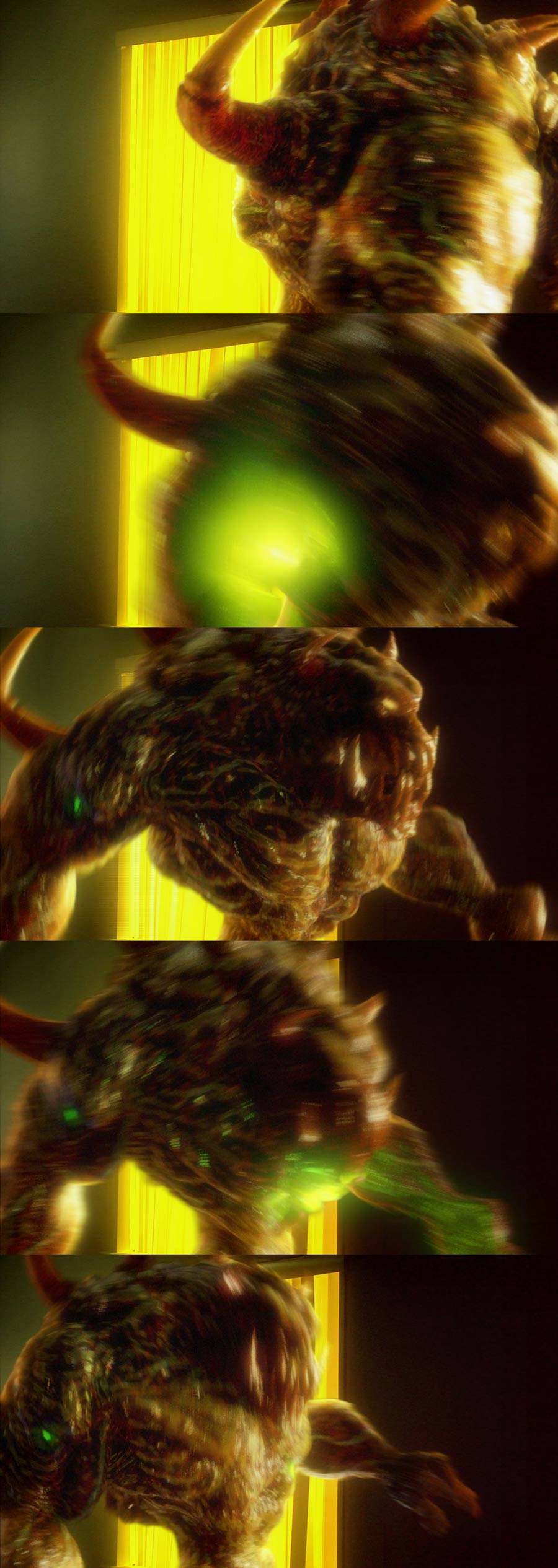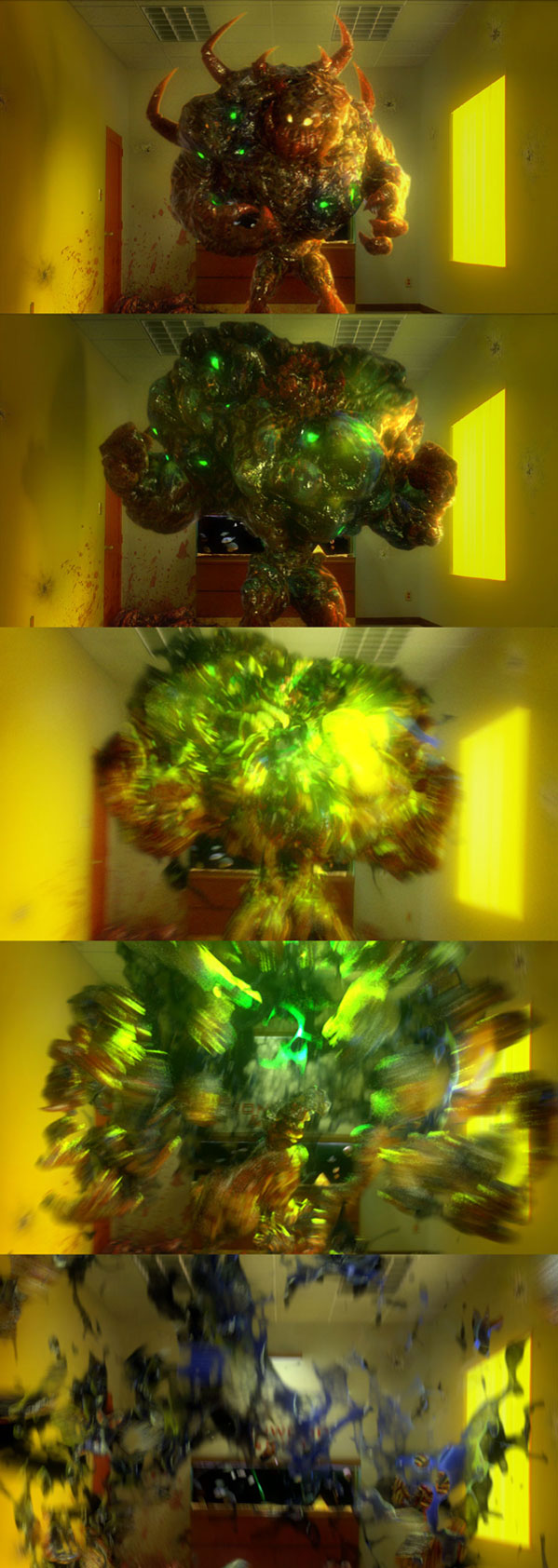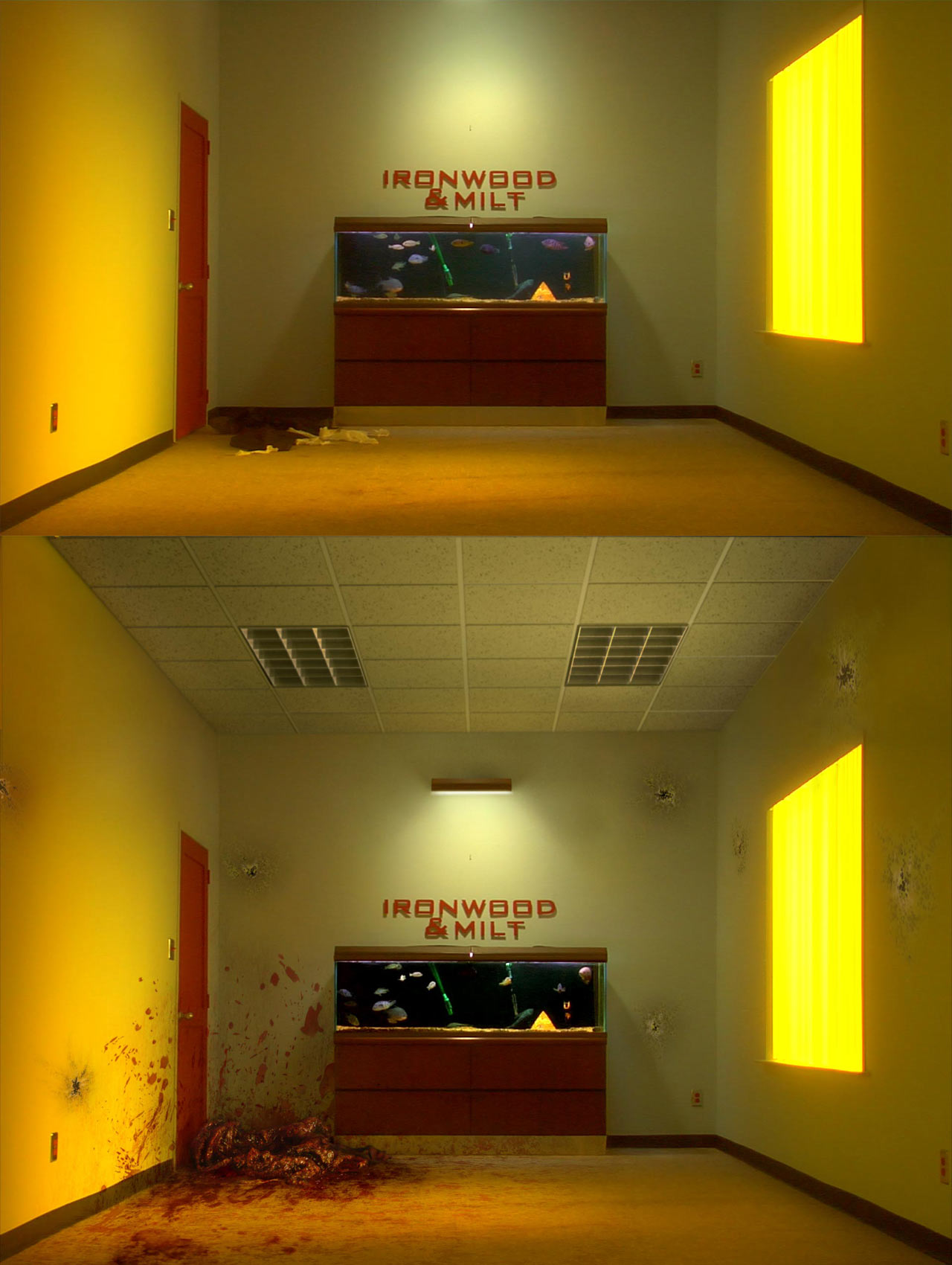Thanks! A lot of work indeed. My poor computer is constantly rendering, even while I work. I’ll be glad to be through at the end of this week!
I’m not really the best person to ask about texture/displacements in Maya. The displacements and texturing for this project are all done in Lightwave. I have rendered the displacement maps in Maya before, but it’s a been a while and I’m pretty rusty on the details. A good reference is the ‘Zbrush to Maya 32-bit displacement guide’ written by Scott Spencer and available on the Pixologic site. Full of golden nuggets of wisdom concerning Maya and displacements.
I did do something a little strange for the image maps on this character, and will share it so everyone can point and laugh. 
Instead of painting a texture image, I rendered out a couple of image maps of the displacement with different materials (cavity, Jantim’s red paint, plaster, etc.) then, in Lightwave, used gradients to change the color/contrast and blend modes to combine the different images.
Here’s a confusing image to help (text numbers correspond to image numbers)
- Cavity map image set as base layer
- coloring/contrast changed using gradient
- Displacment rendered with Jantim’s red paint material used in layer set to Photoshop Hardlight blend mode
- procedural blood (rendered with image maps turned off)
I know it seems like a pain to manipulate the images using gradients, but using FPrime’s interactive preview window, feedback on the changes is immediate.
Would a painted texture have looked better? Probably…but this was fast









